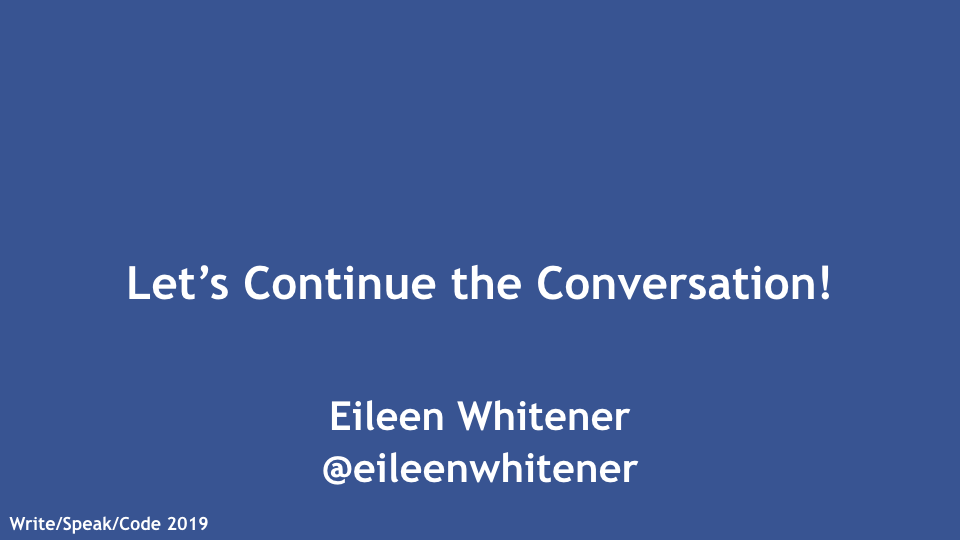Back to Blog
Resources for
"A Crash Course in Off-the-Cuff Speaking"
August 15, 2019 Last updated August 18, 2019
Maybe you're here because of my talk at Write/Speak/Code 2019--or maybe you're just poking around!
I wanted to turn some of the suggestions from my presentation into actionable materials.
(These are also the kinds of exercises we might work through in person with a longer time allotment.)
I've also added images of key slides into the article below.
Note: I will be revisiting this page to hone content and accessibility as I learn more about how to build a blog myself.
All mistakes are mine, but this is an ongoing priority for me.
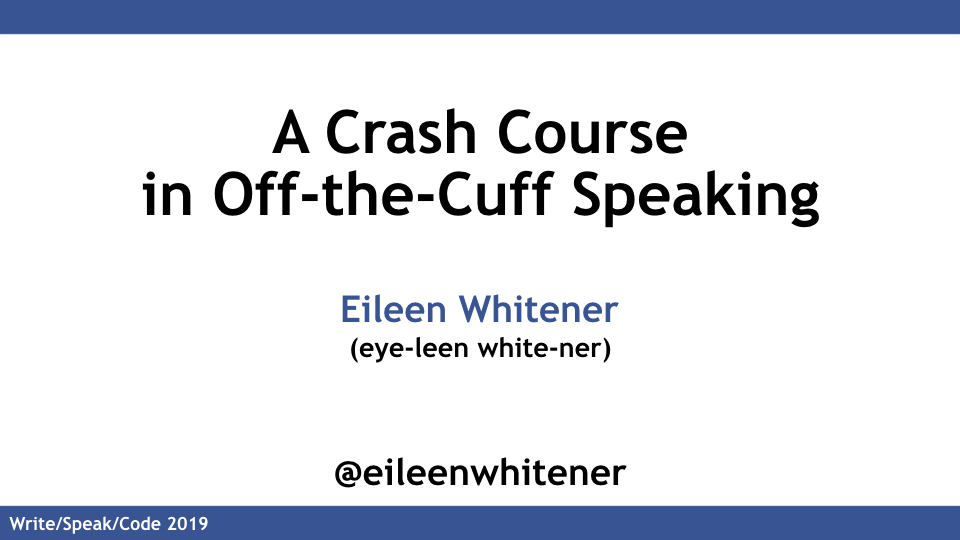
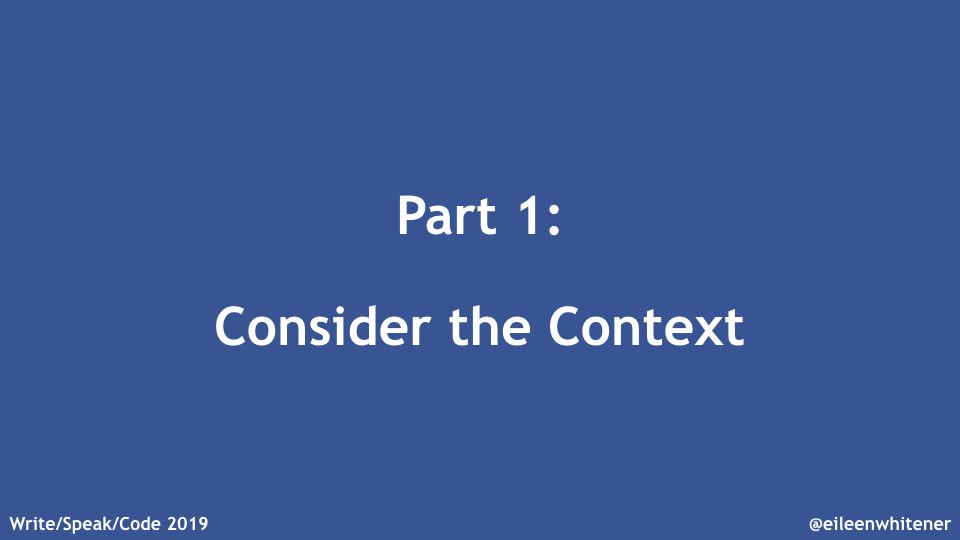
Generally, you can anticipate some of the questions or topics that might come up in an impromptu conversation before the conversation starts. That's because topics are usually relevant to the situation and/or your connection to the others in the conversation.
(You can also use this as a tool to start a conversation yourself!)
Note: In my presentation, these avatars represented particular people in a particular context. For now, I'm not sharing that story publicly; I may introduce a new example and/or change the avatars in a future edit.
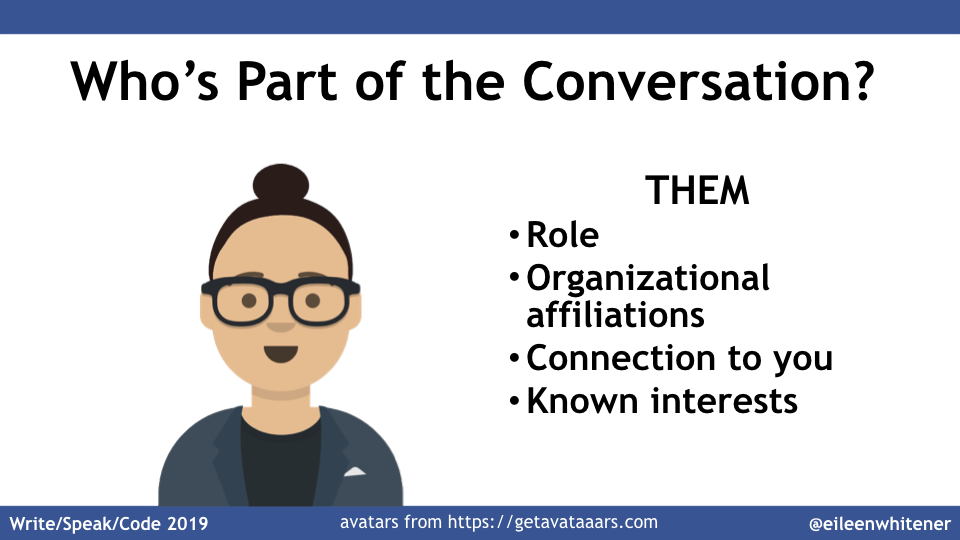
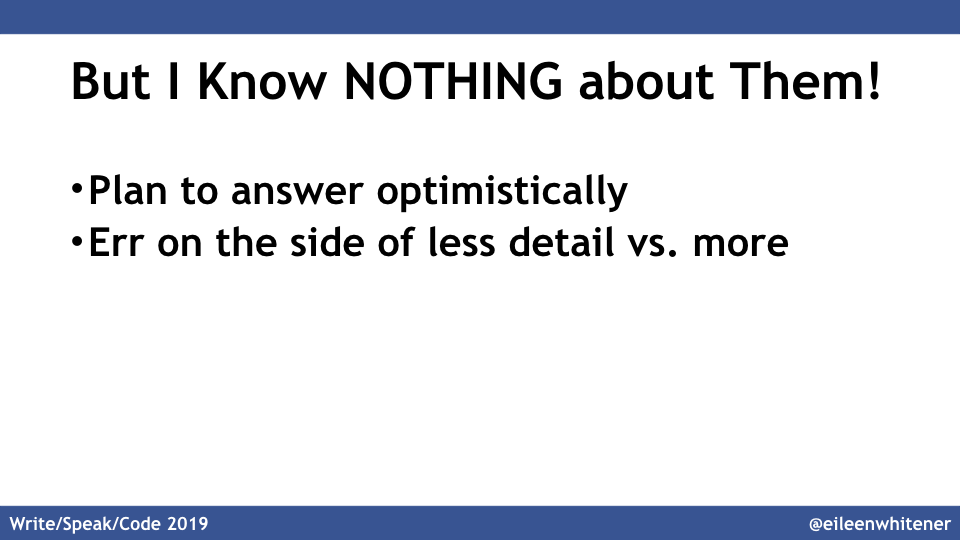
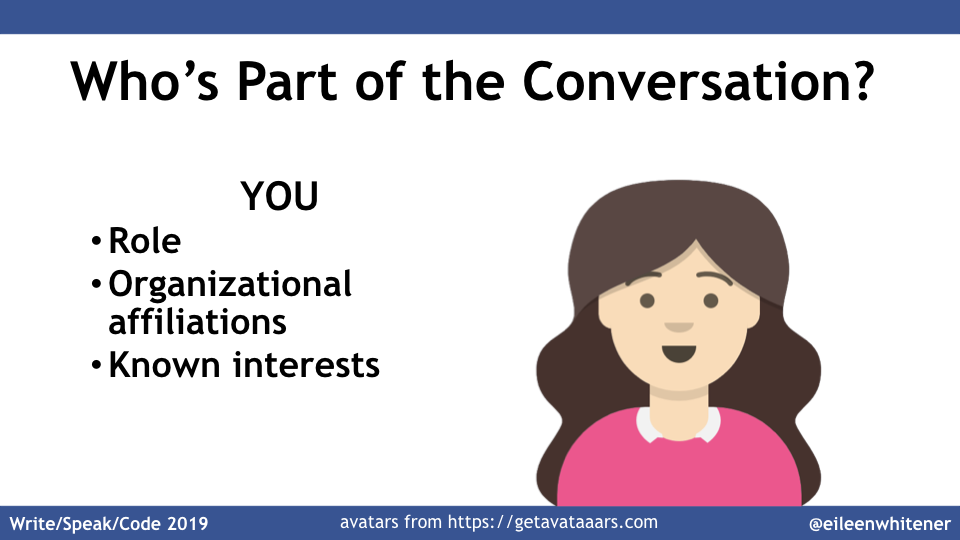
Exercise: Practice reviewing the following context
in situations when you expect conversation:
- What do you know about the other person, if anything?
Depending on the context, you might know their role or their affiliation with an organization. If you've encountered them before, you might also know a little bit about their connection to you or their interests. - (As a quick note, even if you feel like you know nothing about the person, you know this: You're both people, and you're both in this situation! That's a decent amount to work from, especially if they don't know much about you, either.)
- What should you remember about yourself?
It can help to remember your own roles, affiliations, and interests--especially those that others might know about.
After all, the other person is likely to talk about a topic of shared interest.
Additionally, this can help you keep in mind any affiliations that should influence your answer--for example, if you might be perceived to be answering as a representative of a larger group or organization. - Is anyone else close to the conversation?
Be mindful of others who are in the conversation or are close to it.
You might tailor your response to their interests, or choose to share different details when you have a larger audience.
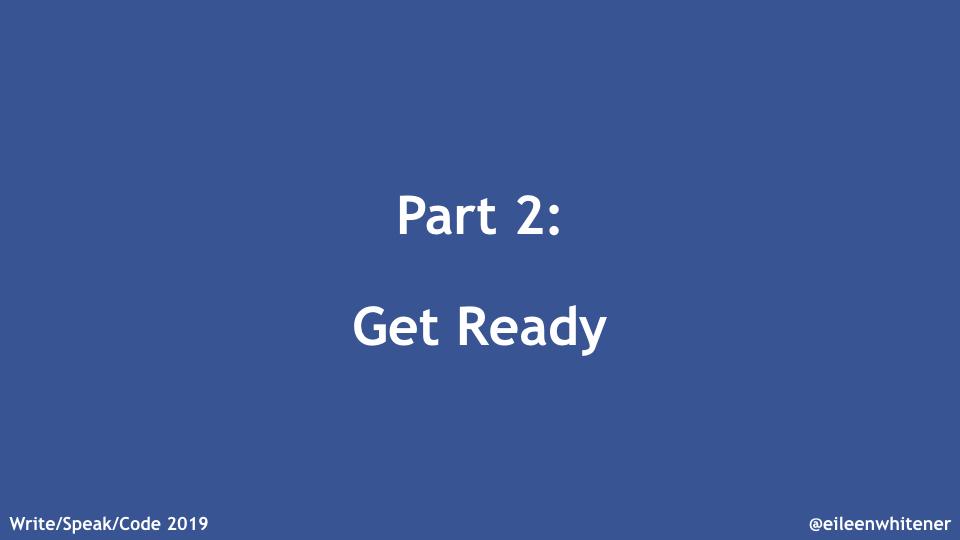
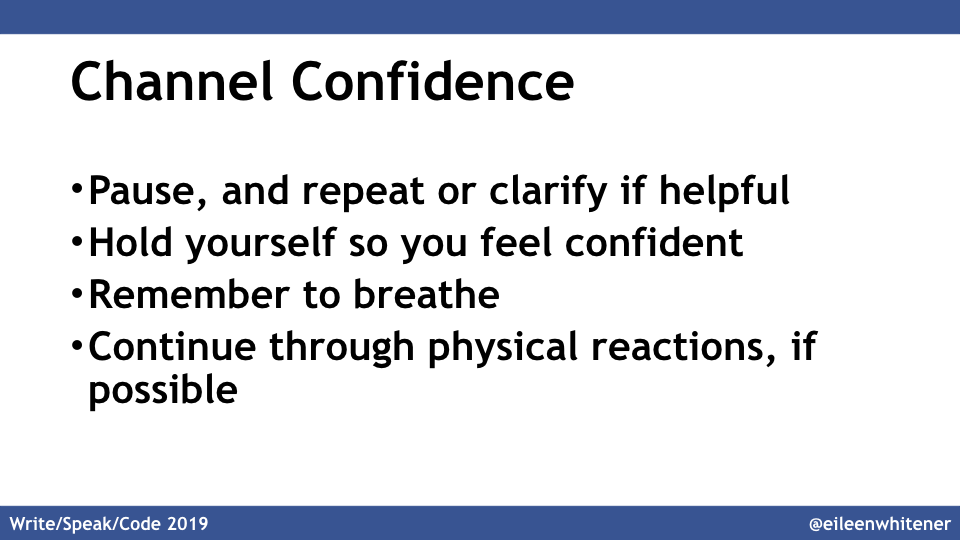
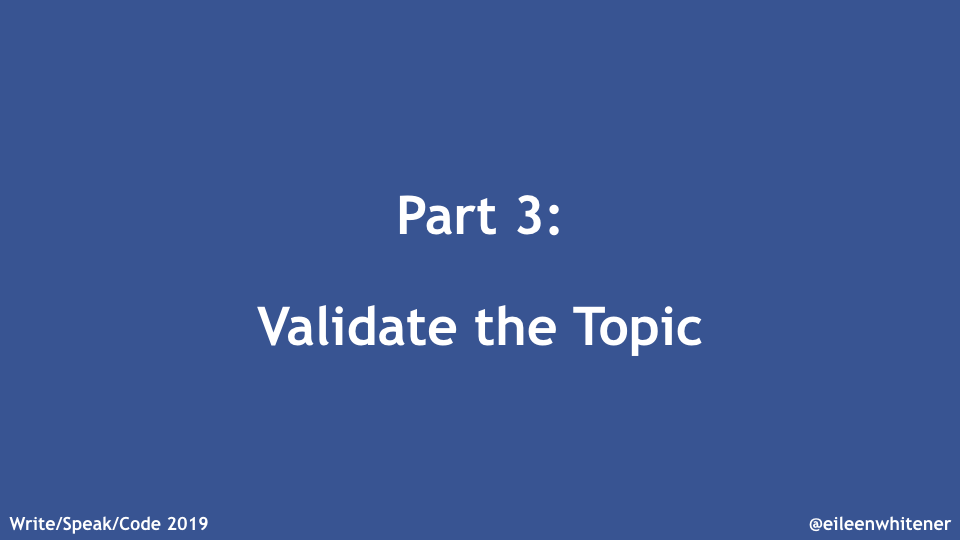
Not all topics are equally relevant! I've created a triage model (inspired by my own botched responses to tricky questions) to help validate whether a topic deserves a response in this context.
Before the conversation you can prepare go-to phrases to draw from as needed.
During the conversation, you can quickly run through the model if a topic doesn't quite feel right.
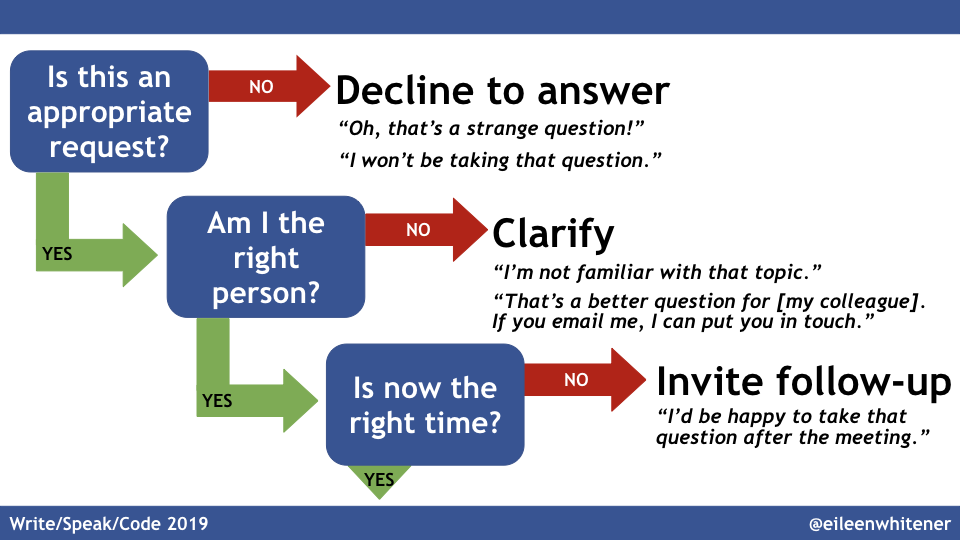
Exercise: Prepare responses to questions you won't be answering
in language that feels comfortable to you:
- Is this an appropriate request?
Prepare a firm decline statement for inappropriate topics.
- Examples: "Oh, that's a strange question!" or "I won't be taking that question."
- Am I the right person?
Prepare a clarification statement for situations when you're not the right person to provide a response.
- Examples: "I'm not familiar with that topic." or "That's a better question for [my colleague]. If you email me, I can put you in touch."
- Is now the right time?
Prepare an invitation to follow-up later for questions that you would want or need to answer at a different time.
- Example: "I'd be happy to take that question after the meeting."
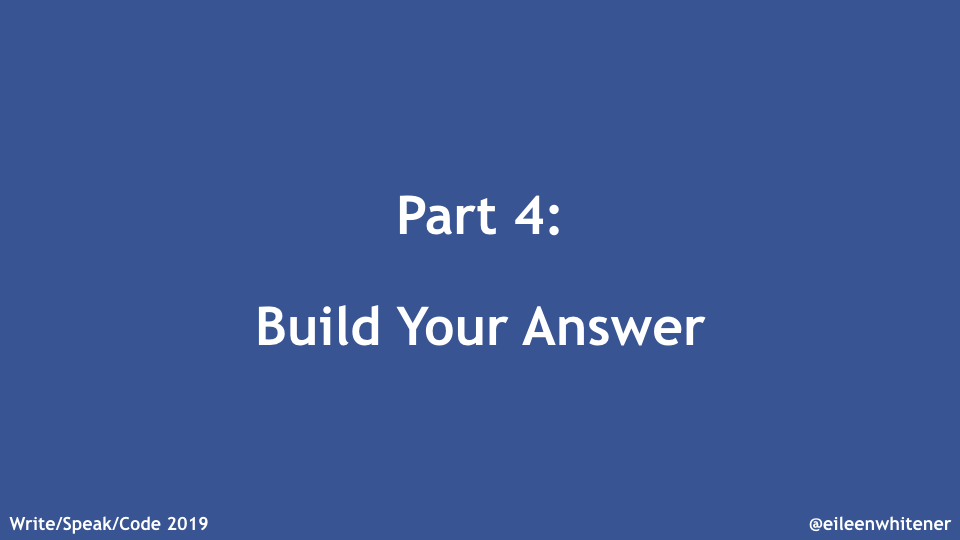
Topics that make it past the validation stage deserve an answer--and here's a very simple model for framing your response.
Before the conversation you can prepare and practice responses to questions you expect to be asked (e.g., "What do you do?").
During the conversation, you can build new answers using this model.
Exercise: Prepare responses to questions you expect to be asked
using this model (if helpful!):
Potential Responses to Prepare
If you're not sure what kinds of questions to prepare, here are some examples to get you thinking!"
- "What do you do?"
- "Read any good books lately?" (Or the equivalent for your hobbies of choice.)
- "How did you learn about [shared context]?" (For example, "How did you learn about this conference?")
Questions with Simple Answers
Where little or no evidence is needed to support your point, you can easily provide an answer by optionally repeating the question, making your point, and then optionally asking a question (if situationally appropriate and if you'd like to buy yourself more time before the next question).
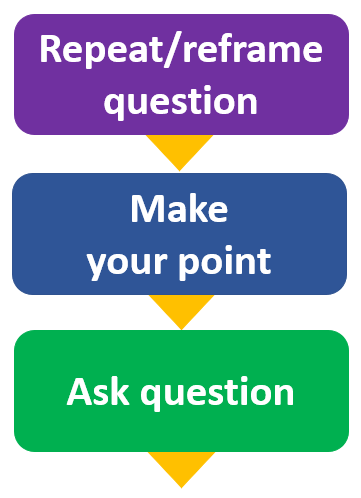
- Repeat/reframe question. (Optional)
This can help you clarify your understanding and buy time to think.
- Example: "How's my day going?"
- Make your point.
Provide a short summary of the information you want to communicate.
- Example: "I'm a little overwhelmed, but having a great time!"
- Ask question. (Optional)
Prepare an invitation to follow-up later for questions that you would want or need to answer at a different time.
- Example: "How's your day going?"
Questions with Complex Answers
When you need to provide some evidence to support your point, you can use a similar model, but present these pieces of information after the initial summary of your point. Once you have provided relevant information, wrap up by repeating your point or providing a logical conclusion.
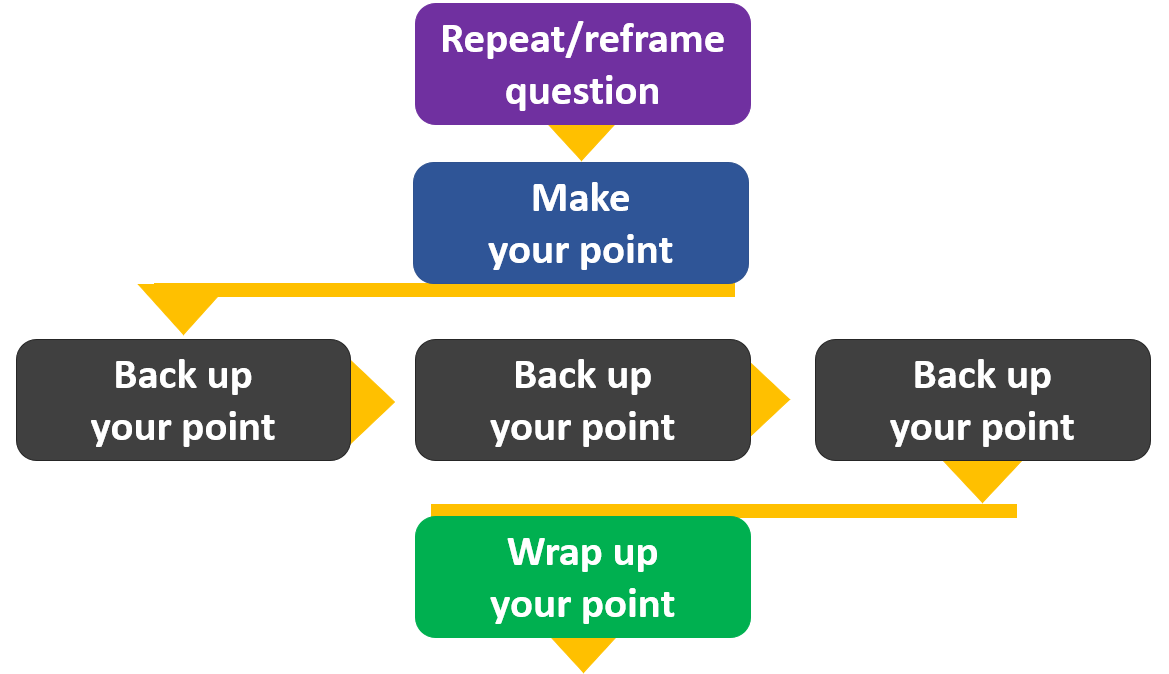
- Repeat/reframe question. (Optional)
This can help you clarify your understanding and buy time to think.
- Example: "You asked about additional public speaking resources."
- Make your point.
Provide a short summary of the information you want to communicate.
- Example: "There are great resources at this conference and online."
- Back up your point. (Repeat as relevant)
Provide brief summaries of any evidence needed to support your main point.
- Example:
- "At this conference, all of the talks on giving a talk will have useful information. There's also an improv workshop later today.
Online, I'd recommend checking out resources like Lynda.com and Toastmasters International." - Wrap up your point.
Conclude with another summary statement or a related thought.
- Example: "No matter what, the most important things you can do to get better at public speaking are to prepare and practice"
